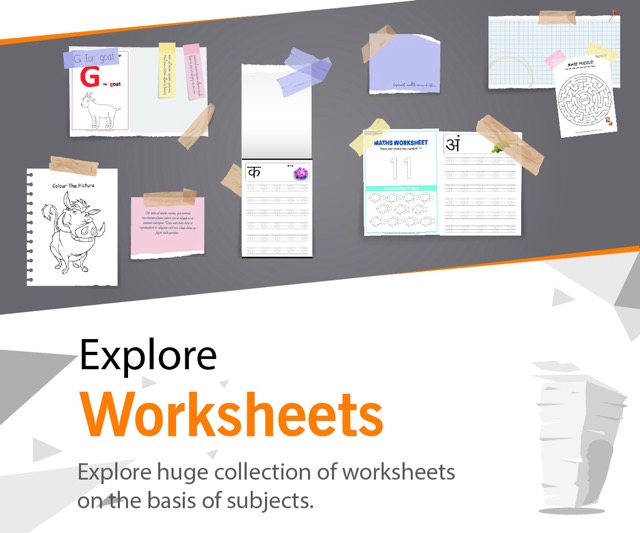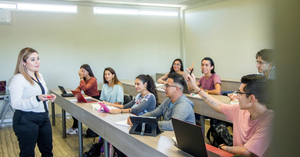The term edtech denotes a form of educational technology that utilises digital tools and resources to improve teaching practices. The same is true of Edtech, but since the COVID-19 pandemic and online learning, it has attracted more attention. Edtech has a range of advantages for students and teachers, including enhanced engagement and personalisation. Nevertheless, edtech also has some challenges and concerns, in particular for parents who might not know the new educational environment, which leaves them to wonder about their children’s learning and development. This article will look at some of the newest trends and innovations in edtech and what they mean for its future. It will also give some advice and assistance to parents who wish to help their children develop in the age of technology.
Personalised Learning
Personalised learning is one of the most prominent trends in edtech since it involves individualising a student’s experience based on their needs, preferences, and goals.
Personalised learning uses data analytics and artificial intelligence (AI) to gather information about students’ patterns, developments, and success results. Informed by this data, the edtech platforms can adjust the difficulty level, pace, and content of learning activities to fit each student, rather than vice versa. For instance, some adaptive learning websites like Khan Academy or Dreambox can redirect students to help them master certain skills and concepts.
Personalised training can enhance the motivation and performance of students as they are allowed to learn at their own pace, pursue what interests them most, and enjoy individual support and guidance.
Immersive Experiences
Another edtech trend is immersive learning (VR and AR), which introduces simulated yet real-life experiences that imitate physical ones. VR enables students to travel through time and space; be it ancient civilizations, historical battles, or even visiting planets in outer space, all of this is possible without actually leaving the room. For instance, certain VR tools like the Expeditions app from Google, Discovery VR, and HistoryView could increase historic learning by simulating historical events in a more realistic manner.
Rather, AR can integrate digital information like images, text, and audio into the real world and grant learners the ability to have conversations through their gadgets. For instance, some AR applications for learning, like Quiver Elements 4D or JigSpace, may encourage interactive study and problem-based thinking by offering three-dimensional models, animations, or quizzes. VR and AR help enhance learning by involving more senses, feelings, and curiosity in students.
Gamification
There is also a trend called gamification in edtech wherein game-like elements like points, badges, levels, or leaderboards are incorporated into the learning activities.
The concept of gamification is known to play a key role in enhancing the overall interest and motivation among students, as it enables them to fulfil personal aims, set goals, and receive immediate feedback, including recognition. For instance, certain educational games and apps like Duolingo, Prodigy, or Classcraft can engage students in learning different topics, such as languages of math or science, while being rewarded for their performance by challenging them while encouraging cooperative work.
Gamification, furthermore, may increase student knowledge retention and transfer since it can aid with the practice of skills in various contexts. Gamification has been found to have positive impacts on academic performance, motivation, and engagement among students.
Mobile Learning
Mobile learning is another edtech trend that involves the use of mobile devices—smartphones or tablets—to deliver and access educational content. With mobile learning, the accessibility and convenience of studying can be increased since students are able to learn on-the-go regardless of their location or time.
The options provided by mobile learning may also include electronic books, podcasts, videos, or apps that meet students’ needs and tastes. For instance, some educational apps or platforms like Coursera, Udemy, and TED-Ed may provide students with the opportunity to enjoy videos on different topics produced by renowned teachers.
Mobile learning demands establishing a secure and responsible virtual teaching environment for children because they become vulnerable in the online world, which may cause cyberbullying, privacy violations, or scams. Thus, parental monitoring and regulation of children’s online behaviours, as well as parents teaching their kids how to use technology properly, are required.
Social learning and collaboration
Social learning and collaboration are other aspects of edtech that promote student-student interaction. Social learning and collaboration can advance students’ academic results and experiences. it makes them learn how to communicate with others, develop alternative opinions, and build a social network.
Edtech provides different online platforms and tools that could support the process of social learning via virtual classrooms, video conferencing facilities, chat rooms, or online forums. For instance, some virtual platforms and tools, such as Zoom, Google Classroom, and Edmodo, can bring students from all around the world near their teachers through connectivity to share information, ideas, and feedback amongst themselves.
Social learning and collaboration can also create a sense of community among the learners since they will be able to work with each other while motivating one another on their performance, respectively.
Conclusion
Educational technology does not substitute traditional education but supports it and goes along with it. The potential applications and benefits of edtech can range from increased engagement and personalisation to resources’ accessibility for students or educators.
But ed-tech also has some issues and concerns, especially for parents whose ideas about learning do not match what is happening around them today. Thus, parents should consider technology as a supporting means in their children’s learning path, not an imposition or a threat. Parents also have to keep informed and engaged in their children’s studies, as well as enlist support from instructors when necessary.









Be the first one to comment on this story.